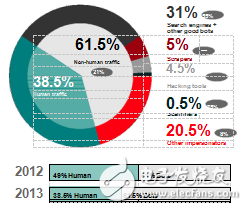
资料下载

白皮书:物联网中怎样解决SimpleLink的Wi-Fi
A link to the
Internet of Things
IoT made easy with SimpleLink™ Wi-Fi® solutions
![]()
Overview
It has been over a decade since the term Internet of Things (IoT) was first coined. Making its way to the center of the stage, it has now become mainstream. All of a sud-den, leading companies are adopting the term vigorously into their most advanced products and services. It is trendy and re-flects state-of-the-art thinking. However, as the term is more widely used, its interpre-tations become more diverse. Some would call any connected device an IoT solution, while others will only refer to big data analytics as the IoT aspect of the product.
In this paper we will sort out what is con-sidered the IoT, and define and explore the necessary building blocks of an IoT system, its main virtues and what it takes to build one. We will show that with the help of prop-er devices, making your device or product IoT enabled is a fairly straightforward task.
What is the IoT?
So, what exactly is the Internet of Things (IoT)? How is it different from the Internet we know and use on a daily basis? Does the fact that it is referred to as the Internet “of Things” stand in contrast to some other Internet, and if not, why is there any distinction to begin with? Why is a postfix needed to designate things in particular?
First, one needs to realize that even basic Internet, the one that we all use on a day-to-day basis, has gone through a great deal of changes over the years. It has gone from being a huge knowledge sharing system to its current state, which is better described as a service-oriented infrastructure. The majority of web traffic nowadays is already non-human and a large share of the content is dynamically created.
The massive explosion of online services, further inspired by the smartphone and handheld revolution, which made these services highly accessible, has created a demand to leverage technology for machine-to-machine (M2M) communication. It has also created a decline in the cost for adding connectivity capabilities into products.
The cloud computing evolution, supported by an increase in storage capacity, has also brought the ability to scale the amount of data that can be stored effectively and affordably. This is yet another angle in enabling machines to generate and collect large amounts of data on a regular basis.
This data has to be processed, analyzed and distilled so that meanigful insights can be extracted and action may be taken based on those insights. The process of making sense out of all this data is also commonly referred to as big data analytics.
Yet, having realized the above, it is still unclear to what extent the Internet-of-people and the Internet-of-machines will blend. Today, the connection is still quite loose. While both share the same infrastructure, the level of interaction between the two is fairly limited. This is, in fact, the essence of the questions introduced at the beginning. Stated differently, it is important to understand how many Internets are there. In our view there will eventually be a
2 Texas Instruments
convergence toward one single Internet to serve all. This realization is critical for the immersion of informa-tion coming from machines.
Bot/Human traffic distribution
31% 55%

Searchengines + other good bots
61.5%5%—
Non-human trafficScrapers
4.5% 10%
21%
38.5%Hacking tools
Human traffic0.5% 75%
Scammers
20.5% 8%
Other impersonators
![]()
![]()
![]()
![]()
2012
2013
49% Human 51% Bots
38.5% Human61.5% Bots
Source: Incapsule
Figure 1. Distribution of Internet traffic sources
The IoT paradigm discussed may be encountered in a wide variety of venues that span across the vari-ous activity circles throughout the day using different kinds of devices. In the personal area network we encounter wearable devices to enhance our health and wellness. At home we are surrounded with an ever-growing number of appliances, multimedia devices and other consumer gadgets. While on-the-go, we use private or public transportation vehicles and infrastructure to improve our mobility time utilization. In the industrial case, sensors might be introduced for production efficiency, maintenance and failure man-agement. And at a metropolitan level, smart building management systems and infrastructure for remote management, on-going maintenance and asset tracking will be observed.
Furthermore, the IoT is not limited to specific types of products. Both high-end technology products and products that are extremely simple may take part in the flow of information either as data providers or con-sumers. And this is not confined to the boundaries of electronic devices and appliances. It is also reshaping the way traditional products are designed (examples as bizarre as a connected toilet are becoming more common these days)。
This framework should be always on; its availability should not rely on Internet availability. While it is true that some functionality will be absent when network connectivity is obstructed, the overall experience, coher-ence and consistency should be maintained.
Anything.
Anywhere.
Anyone.
Anything
Eventually, any device, appliance or entity will be seamlessly connected to the Internet. Connectivity will not be the main feature of the device, but will extend the device’s capabilities.
声明:本文内容及配图由入驻作者撰写或者入驻合作网站授权转载。文章观点仅代表作者本人,不代表电子发烧友网立场。文章及其配图仅供工程师学习之用,如有内容侵权或者其他违规问题,请联系本站处理。 举报投诉
- 相关下载
- 相关文章






